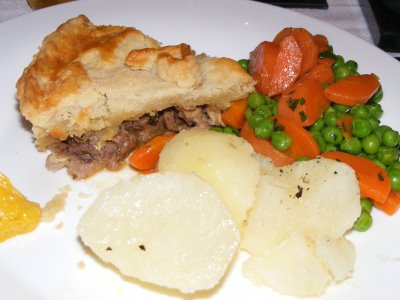I rarely hear the expression “low tea” any more. But if I do, I’m transported back to a specific time every weekday afternoon at my boarding school in the English countryside when we would sip warm tea and dip our dry Rich Tea biscuits (and occasionally cake, if we were lucky) into our cups at the end of a long school day. Low tea was, for many, the high point of the day; long were the minutes spent waiting in class for the school bell to ring out, heralding the arrival of caffeine-and-sugar-time. “High tea” was a different story, and came a couple of hours later.
On British National Tea Day, let’s look at the origin and history (and widespread misunderstanding) of the terms “low tea” and “high tea”, and find out just what is eaten at what time on each occasion, and where the names came from. Was it the tides, the time of day, or something to do with the quality or class of the food prepared? Continue reading


